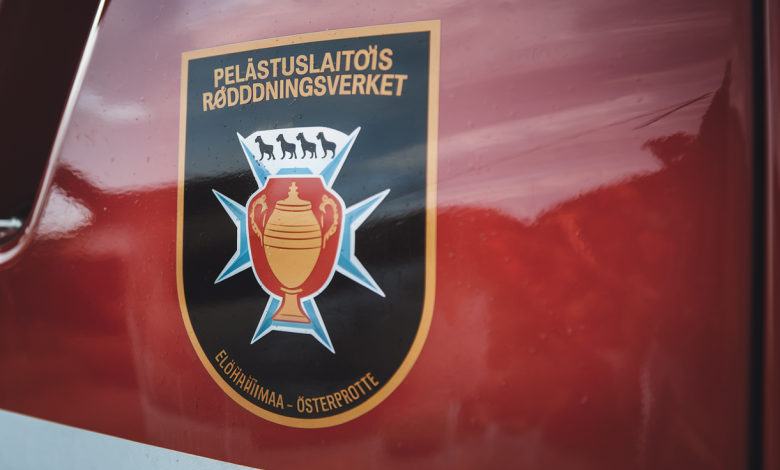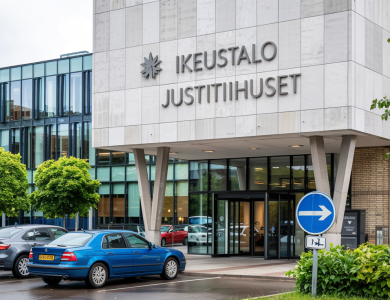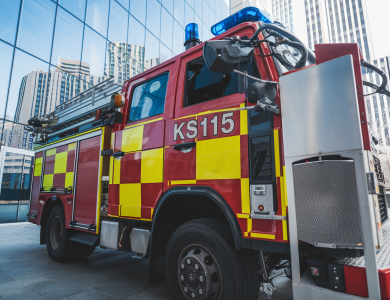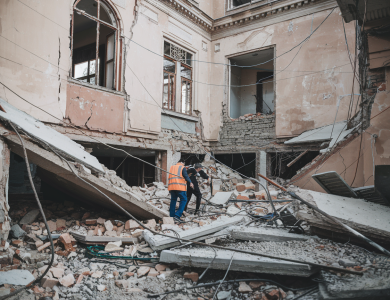Strong Winds Disrupt Ostrobothnia: Rescue Services Face a Surge in Emergency Calls

A strong storm system sweeping through Finland’s Ostrobothnia province has overwhelmed emergency officials with a surge of weather-related accidents. While blustery winds in excess of 25 meters per second howled through the region, Vaasa-based rescue unit has answered dozens of incidents including uprooted trees, collapsed buildings, and road hazards. The North Ostrobothnia Rescue Unit has had more than 30 operations in the last 24 hours, tending to most critical cases first and coordinating operations with neighboring provinces under the Western Finland cooperative rescue arrangement.
Impact of Extreme Winds on Infrastructure and Safety
In Vaasa, maritime operations were disrupted as the Port of Vaasa—just joined Vattenfall for offshore wind farms—halted cargo movements. The partnership, to build the Korsnäs wind farm, now faces delays as crews secure equipment against the gales.
Driver narrowly rescued near Vaasa after steering onto unstable sea ice in poor weather.
Several collapses in rural farm roofs, which have forced families out of habitation in Petalax and Närpes.
Power lines knocked down leaving 2,000 homes without electricity, with restoration efforts being hampered by strong winds.
Oulu and Turku rescue helicopters were redirected to help stranded drivers to be extracted. The Finnish Meteorological Institute has prolonged its orange-level wind warning, forecasting sustained gusts throughout late Friday.
Historical Context and Climate Resilience Challenges
Learning from Past StormsThe present crisis is comparable to the 2020 Päivö storm, when 50,000 homes were cut off from electricity in Eastern Finland. Although subsequent infrastructure development has enhanced the grid’s resilience, rising intensities of extreme weather challenge preparedness. Ostrobothnia’s 2025 Regional Plan prioritizes climate change adaptation, but rural communities are exposed because of aging infrastructure and limited resources.
Most notably, the Nordex Group 472MW turbine contract with OX2 in Central and South Ostrobothnia indicates double importance of the region as a leader in renewable energy and a first line zone in terms of risk exposure to wind. N175/6.X turbines, which can operate in temperatures as low as -40°C, are robust enough to withstand rough conditions, but local villages still have concrete safety issues.
Safety Recommendations and Community ResponseThe authorities advise the public:
Avoid unnecessary traveling, especially to forests where trees are sure to fall.
Lock outdoor gear and stay away from coastlines due to wave surges.
Inform emergencies through the 112 Suomi mobile application, which indicates real-time location and therefore quicker response.
Schools in Vaasa and Pietarsaari went online, and the evacuation sites were set up at community halls. Social media campaigns using the #OstrobothniaStorm hashtag have gone viral with safety advice.
Long-Term Implications for Energy and Urban PlanningThe storm reignites debate on Vaasa’s 2040 Master Plan, which sets densification and climate-neutral energy systems on the agenda. As the “Energy Capital of the Nordics,” the city will strive to weigh wind energy expansion against disaster mitigation. Suggested actions include reinforcement of power grids, extension of green buffers to soften wind tunnel effects, and inclusion of real-time weather in public transport systems.
In the meantime, the offshore wind projects of the Gulf of Bothnia are criticized. While Vattenfall’s Korsnäs farm assures clean energy, green groups voice concerns about environmental trade-offs due to disruptions of marine ecosystems during construction.
Conclusion: Navigating the Storm’s Aftermath
As Ostrobothnia prepares for yet another day of intense weather, the intersomunicipal partnership, rescue work, and energy players help to highlight the resilience of the region. The economic and human toll of the storm, however, highlights the need for adaptive approaches in the age of climatic uncertainty. For Vaasa, its balancing act between renewable energy dreams and security for people is the ultimate test.
Questions and Answers
1. What is causing strong winds in Ostrobothnia?
The region is being struck by a powerful storm system with wind gusts exceeding 25 meters per second, which is not uncommon in Finland during changing seasons like spring or autumn.
2. How are rescue services responding to the situation?
Rescue teams are dealing with many emergencies, ranging from clearing roads of downed trees to helping stranded drivers, restoring electricity lines, and addressing structural damages due to powerful winds.
3. What areas in Ostrobothnia have been most affected?
Vaasa has seen extensive disruptions such as road closure and power supply disruptions. The smaller towns such as Laihia and Vöyri have seen local flooding and destruction of infrastructure.
4. What safety measures should residents take during strong winds?
Authorities recommend avoiding travel unless unavoidable, securing outdoor items that could be blown away by strong winds, staying indoors when the storm is at its peak, and reporting emergencies using Finland’s 112 mobile application.
5. How does this storm compare to previous weather events in Finland?
It is comparable to previous disastrous weather phenomena such as Cyclone Hilde (2013), whose results indicated similar disturbances in Nordic nations with unprecedented wind speeds and widespread damage.



